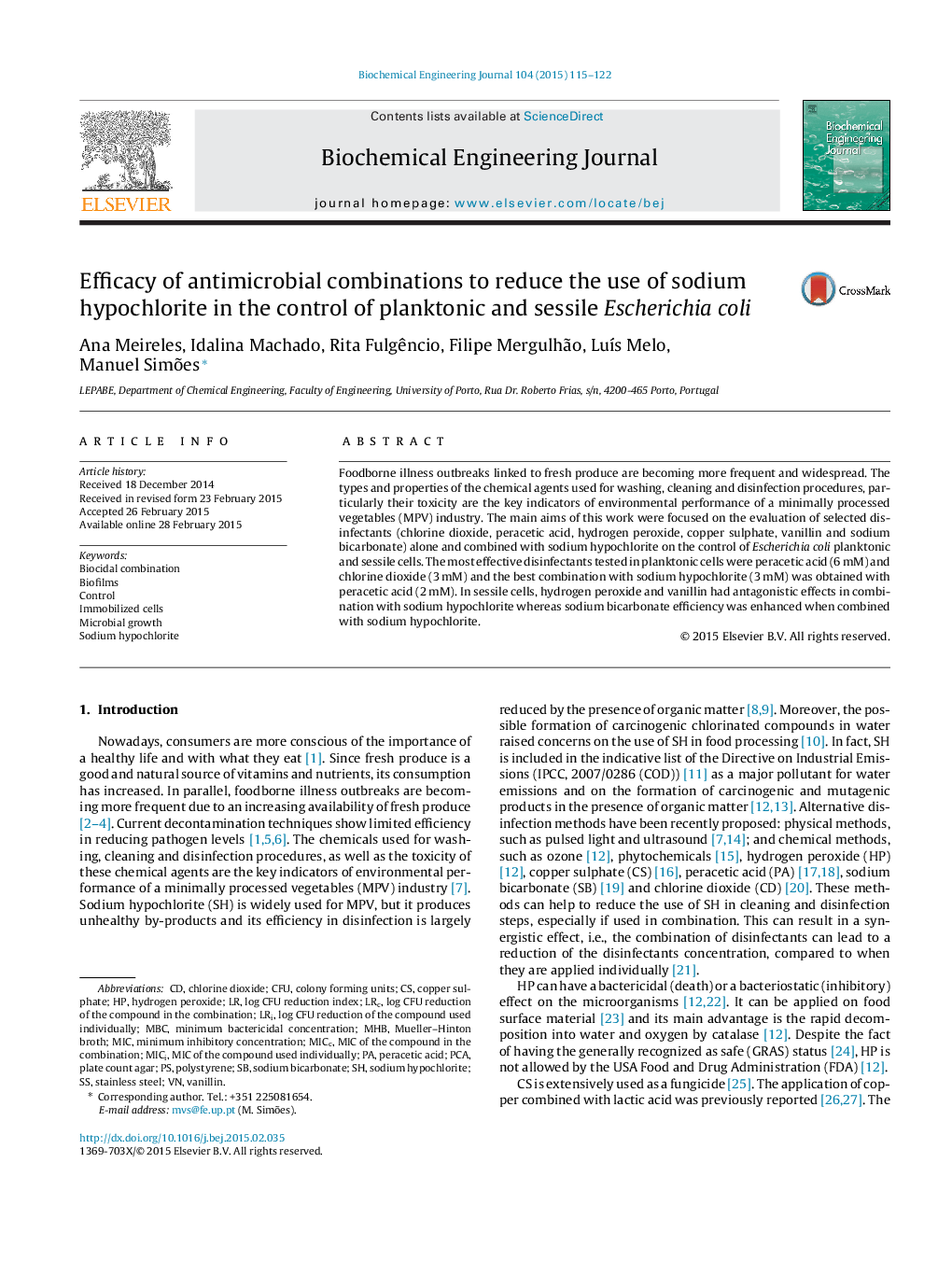| Article ID | Journal | Published Year | Pages | File Type |
|---|---|---|---|---|
| 2796 | Biochemical Engineering Journal | 2015 | 8 Pages |
•Sodium hypochlorite can produce carcinogenic chlorinated compounds in water.•Alternative disinfection methods reduce the use of chlorine if used combined.•Peracetic acid and chlorine dioxide were the most effective disinfectants tested.•Sodium hypochlorite and peracetic acid mixture increased antimicrobial activity.•Sodium bicarbonate action combined with chlorine was enhanced in disinfection.
Foodborne illness outbreaks linked to fresh produce are becoming more frequent and widespread. The types and properties of the chemical agents used for washing, cleaning and disinfection procedures, particularly their toxicity are the key indicators of environmental performance of a minimally processed vegetables (MPV) industry. The main aims of this work were focused on the evaluation of selected disinfectants (chlorine dioxide, peracetic acid, hydrogen peroxide, copper sulphate, vanillin and sodium bicarbonate) alone and combined with sodium hypochlorite on the control of Escherichia coli planktonic and sessile cells. The most effective disinfectants tested in planktonic cells were peracetic acid (6 mM) and chlorine dioxide (3 mM) and the best combination with sodium hypochlorite (3 mM) was obtained with peracetic acid (2 mM). In sessile cells, hydrogen peroxide and vanillin had antagonistic effects in combination with sodium hypochlorite whereas sodium bicarbonate efficiency was enhanced when combined with sodium hypochlorite.
